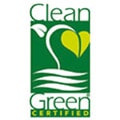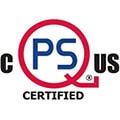AIR CLEANERS TO AVOID FOR THE CANNABIS GROWER: PCO, TIO2,
HYDROXYL RADICAL OH- OR R.O.S. PRODUCTS
HYDROXYL RADICAL OH- OR R.O.S. PRODUCTS
In the cannabis industry, it seems that savvy marketers of Residential Air Quality products have tried to mislead growers into using residentially sized and poor performance products to alleviate Powdery Mildew and other associated micro contaminants growers battle. Because of this, we want to outline several studies related to the use of TiO2 (Titanium Dioxide), R.O.S. (Reactive Oxygen Species), Ozone, PCO (Photocatalytic Oxidation), and Hydroxyl radicals (OH–) for the disinfection of airborne and surface contaminants. The science needs to be exposed so that cannabis growers understand the dangers to their plants, terpenes, and employees if they use a product claiming a disinfection method above, as these products were never intended to be used in an indoor grow facility application.
Sanuvox has been in the Air Quality business for over 20 years. We have seen the industry start in the early 1990’s by taking the UV-C germicidal lamps used in water treatment facilities and adapt them to air and A/C evaporator coil disinfection. The use of UV-C disinfection has been utilized in hospitals, office buildings, schools, factories and homes for the last 25 years and Sanuvox is proud to have been a pioneer in this industry. The use of UV-C air and coil disinfection has been adopted by ASHRAE (Association of Heating, Refrigeration, and Air Conditioning Engineers) since 2008. We are dedicated to push the Air Quality industry forward with standardization, proper testing protocols, and honest marketing.
Sanuvox noticed around 1997 a different air disinfection technology began entering the residential air purification market. A technology now known as PCO (Photocatalytic Oxidation) or TiO2 (using Titanium Dioxide). TiO2 (titanium dioxide) is the material painted on a surface to provide the PCO (Photo-catalytic oxidation) process creating OH radicals (hydroxyl radicals). We immediately began looking at the viability of this technology and found the following progression through several research papers and studies.
1974: NASA developed this technology to remove ethylene from their indoor greenhouses on the space station. These greenhouses were the size of a normal table top, very easy to implement and with low levels of ethylene to reduce. PCO/TiO2 was specifically used for VOC and ethylene reduction, not for biological disinfection of mold, virus, or bacteria. PCO seemed to be effective in very small enclosures, but then NASA stopped using the technology mainly because of the quick deactivation of the catalyst and PCO fell off the radar until 1998.
1998: EPA did a full study on PCO and its performance as a VOC cleaner compared with carbon filters. Again, PCO was not used for biological disinfection, but only as a means of odor and VOC removal from indoor air. The study described that in order for PCO to be as effective as carbon filters, there would need to be multiple square feet of PCO catalyst to provide equal oxidation potential. In addition, the cost of the PCO catalyst is 10 times that of carbon filters, thus the costs are severely prohibitive for a properly designed PCO system at the current time.
2008: The Journal of Air & Waste Management Association published an article concerning titanium dioxide photocatalyst deactivation. They submitted titanium dioxide (TiO2) catalyst to a model silicone sealant off-gas (PDMS vapor) which is widely used in residential and commercial buildings in significant quantities. It was found that the silica vapor deactivated the TiO2 catalyst reducing its effectiveness. Thus, in every facility silica (PDMS vapor) will adhere to the TiO2 catalyst rendering the oxidation/removal of odors and VOC’s ineffective due to the silica (PDMS vapor) deactivating the catalyst surface.
2008: Researchers at Lawrence Berkeley National Laboratories found that Photocatalytic Oxidation (PCO) reduces indoor VOC’s but, produce formaldehyde as a byproduct. The authors state that theoretically all VOC’s will be broken down into carbon dioxide and water, but in many cases especially where the relative humidity is 40% or higher, the reaction to receive this end state have numerous stages and are extremely complex which produce intermediary byproducts. Because of the incomplete decomposition of the VOC’s by TiO2, there was a net production of formaldehyde, acetaldehyde, formic acid and acetic acid. The researchers found that the formaldehyde and acetaldehyde concentrations were up to 4.6 times higher than before undergoing PCO. Formaldehyde and acetaldehydes are human carcinogens and are recommended to be kept at the absolute minimums for indoor air. The researchers suggested further in-depth studies on the by-products of PCO before being utilized for indoor spaces.
2013: An article in the Open Journal of Inorganic Chemistry studied the potential of TiO2 for VOC removal. The authors found that in a complete PCO reaction, the final products are CO2 and H2O. However, a complete reaction in PCO is extremely difficult especially where relative humidity is 40% or higher and there are several intermediates that are produced on the way to a complete reaction. These intermediates will poison the active sites resulting in deactivating the TiO2 catalyst. In addition, the produced intermediates can be more toxic to human health, thus they recommend further study before widespread use of TiO2.

2015: An article published in Molecules Journal titled The Viability of Photocatalysis for Air Purification conducted further validation studies. The validation studies concluded that both catalyst lifetime and byproduct formation are still current barriers to implementing this technology. Thus, byproduct formation has still not been solved or remedied as found in the 2008 study at Lawrence Berkeley National Laboratories.
Lastly, which is extremely important to growers is that OH– radicals (hydroxyl radicals) are claimed to be entering your grow room to disinfect Powdery Mildew and other contaminants on your plants and surfaces. This cannot occur with friendly oxidizers and hydroxyl radicals as their half-life is a nano-billionth of a second. The only thing that is entering the grow room is ozone. Ozone is particularly bad in environments where increased CO2 is found as ozone will react with CO2 to form carbonic acid ions HCO3– . Carbonic acid ions can easily degrade or destroy your terpenes as well as being detrimental to the health and growing cycle of the plant.
Below is the chemical formula for the reaction :
OH-+ CO2 -> HCO3-
Summary
There are several more studies on TiO2 (PCO) reaction for Indoor Air Quality, but these are the over-riding themes present in the studies:
- TiO2 (PCO) is used for VOC’s reduction, not for biological disinfection of molds, virus and bacteria.
- Several harmful byproducts (intermediaries) are formed when humidity is 40% or greater and/or when the contaminant load is high.
- Silica vapor, a product from silicone used in every building, can deactivate the TiO2 catalyst severely limiting performance.
- Several square feet (not square inches) of TiO2 catalyst is needed for any proper reaction to occur.
- Ozone is present when producing hydroxyl radicals, which react with high levels of CO2 to create a carbonic acid environment within the grow room damaging plants and terpenes.
In conclusion, indoor cannabis growers should steer clear of any product utilizing TiO2, PCO, hydroxyl radicals (OH– ), superoxide anions, ozone, R.O.S (Reactive Oxygen Species) or any other product that claims to send “oxidizers” into the growing space. It is safer, more effective and efficient for a cannabis grower to increase filtration and utilize a high intensity UV-C commercial air disinfection system, which does not off gas, send anything to the growing space, create ozone, formaldehyde, carbonic acid ions, nor create any other unnatural, harmful byproducts. When the goal of a grower is to produce consistent quality harvest after harvest, it is mandatory that nothing enters the grow room that cannot be controlled. With these air purifiers that produce oxidizers that enter the grow room, it is impossible for a grower to create a consistent and safe grow room to achieve this desired consistency.
Bibliography
Leovic, Kelly. Cost Analysis of Indoor Air Cleaners for Organic Compounds: Activated Carbon vs. Photocatalytic Oxidation. Inside IAQ Spring/Summer 1998, EPA, 13-15.
Chemweno, Maurice K.; Cernohlavek, Leemer G.; Jacoby, William A. Deactivation of titanium dioxide photocatalyst by oxidation of polydimethylsiloxane and silicon sealant off-gas in recirculating batch reactor. Journal of the Air & Waste Management Association, Vol. 50, Iss 1, 2008
Akbari, Hashem; Berdahl, Paul. Evaluation of Titanium Dioxide as a Photocatalyst for Removing Air Pollutants. California Energy Commission and Lawrence Berkeley National Laboratory, January 2008, CEC-500-2007-112.
Lin, Lin; Chai, Yuchao; Zhao, Bin; Wei, Wei; He, Dannong; He, Belin; Tang, Qunwei. Photocatalytic oxidation for degradation of VOCs. Open Journal of Inorganic Chemistry, 2013, 3, 14-25.
Lexuan Zhong, Fariborz Haghighat. Photocatalytic air cleaners and materials technologies – Abilities and limitations.
Building and Environment, 2015; 91: 191 DOI: 10.1016/j.buildenv.2015.01.033
Hay, Stephen O.; Obee, Timothy; Luo, Zhu; Jiang, Ting; Meng, Yongtao; He, Junkai; Murphy, Steven C.; Suib, Steven. The Viability of Photocatalysis for Air Purification. Molecules J. 2015, 20, 1319-1356.





